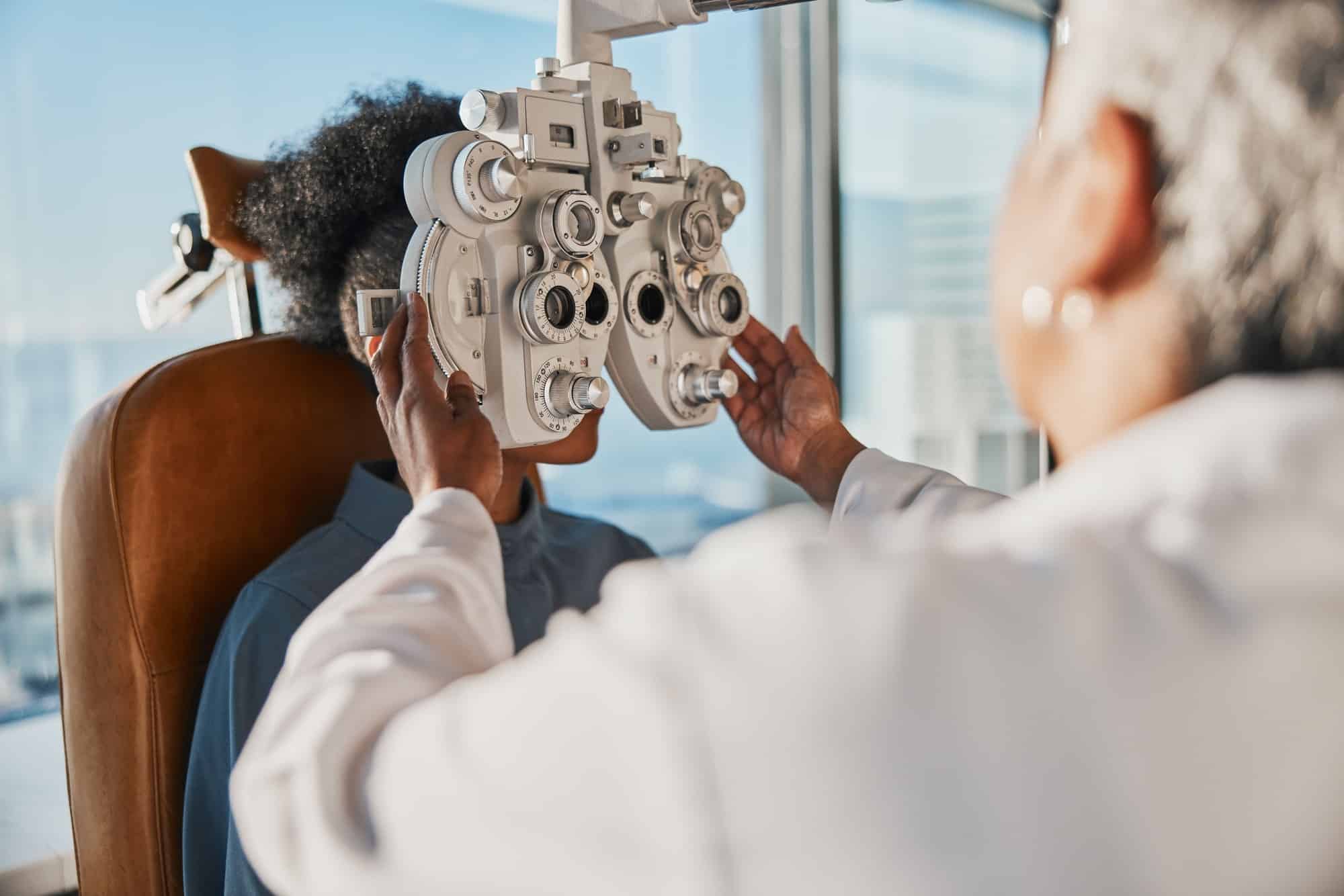Corneal transplant surgeries, also known as corneal grafting, is a surgical procedure that replaces part of the cornea with corneal tissue from a donor. It is a complex procedure that requires precision and skill, particularly when dealing with conditions like keratoconus, a degenerative eye disorder causing visual distortion. This article will explore the role of advanced corneal mapping in improving the outcomes of these surgeries and whether UK optometrists can leverage this technology effectively.
Significance of Advanced Corneal Mapping in Eye Care
Let’s first understand what exactly corneal mapping is. It is a non-invasive visual inspection of the cornea. It can use various techniques, but the primary goal remains the same: evaluating the shape and health of the cornea. Advanced corneal mapping is particularly useful in detecting conditions like keratoconus before they progress too far.
Cela peut vous intéresser : How can UK clinical pharmacists help manage complex medication regimens in elderly patients with chronic illnesses?
The corneal topography, obtained using a device called a topographer, provides detailed information about the cornea’s curvature and shape. This is particularly important for patients with conditions such as keratoconus, where the cornea thins out and bulges into a cone shape, leading to blurry vision and sensitivity to light.
Using search tools like Google Scholar and PubMed, you can find numerous studies exploring the benefits of corneal mapping. For example, a recent study (doi: 10.1001/jamaophthalmol.2020.3018) highlighted how corneal mapping could help assess the risk of keratoconus progression in patients. The earlier the detection, the better the prognosis, making advanced corneal mapping a valuable tool in eye care.
Dans le meme genre : What are the innovative non-drug approaches UK rheumatologists are using for managing systemic lupus erythematosus?
Implementing Advanced Corneal Mapping in the UK
In the UK, the National Health Service (NHS) recognises the importance of early detection and treatment of keratoconus. One notable treatment is corneal collagen cross-linking (CXL), a surgery that involves using vitamin B2 and ultraviolet light to strengthen the collagen fibres in the cornea, thus slowing or halting the disease’s progression.
The question then is, can UK optometrists utilise advanced corneal mapping to improve outcomes in corneal transplant surgeries? The answer seems to be yes. Advanced corneal mapping can help optometrists plan the surgery more effectively, ensuring the right part of the cornea is targeted. This can significantly improve the transplant’s success rate and, subsequently, the patient’s visual outcomes.
Impact on Refractive Surgery Outcomes
Advanced corneal mapping is not just useful for corneal transplant surgeries. It has also shown to improve outcomes in refractive surgery procedures like LASIK. Such surgeries involve reshaping the cornea using a laser to correct vision problems, and a detailed map of the cornea can help the surgeon plan and execute the procedure with higher precision.
A PubMed search will reveal studies such as the one with the doi: 10.1016/j.jcrs.2018.05.029, which found that corneal mapping significantly improved refractive surgery outcomes. By using this technology, surgeons can predict how the cornea will heal post-surgery, which can help them optimise the surgical plan for better visual results.
Barriers and Opportunities for UK Optometrists
While the benefits of advanced corneal mapping are clear, there are a few barriers to its widespread adoption in the UK. The main one is cost – both of the equipment and the training required to use it.
However, consider the long-term benefits. The use of advanced corneal mapping can lead to better surgical outcomes, reduced need for corrective lenses post-surgery, and overall improved patient satisfaction. Over time, the cost savings from these benefits could offset the initial investment.
Moreover, with the rise of telemedicine, UK optometrists have an opportunity to collaborate with international peers, learn from their experiences, and even receive training in advanced corneal mapping, all without leaving their clinics.
Thus, while there are barriers, they are not insurmountable. With a combination of strategic investment and a collaborative approach to learning, UK optometrists can indeed utilise advanced corneal mapping to improve outcomes in corneal transplant surgeries.
Advanced Corneal Mapping and Contact Lens Fitting
The application of advanced corneal mapping extends beyond surgical planning. It also has a direct impact on the successful fitting of contact lenses, especially for patients with irregular cornea conditions such as keratoconus.
Patients with keratoconus often experience discomfort, poor fit, and unstable vision with regular contact lens design due to the irregular corneal shape. Using a corneal topography-guided approach, optometrists can make a custom-made lens that provides a better fit, improved visual acuity, and increased comfort.
A Google Scholar search can reveal articles like the one with doi:10.1016/j.clae.2013.07.013 that showcases the use of topography-guided contact lenses in managing keratoconus. Advanced corneal mapping allows for the precise measurement of the corneal surface, leading to a more accurate and effective contact lens prescription.
Despite the upfront cost for the advanced corneal mapping technology, the long-term benefits include improved patient satisfaction, better visual outcome, and a decrease in complications related to poorly fitting lenses. For UK optometrists, it provides an opportunity to provide better care and boost their professional reputation in the field of eye care.
Corneal Cross-linking and the Role of Advanced Corneal Mapping
Corneal cross-linking (CXL) is a treatment method that uses vitamin B2 and ultraviolet light to halt or slow down the progression of keratoconus. Advanced corneal mapping plays a pivotal role in this process.
The procedure of CXL requires precise targeting of the weakened corneal areas. Without a detailed map of the cornea, it becomes challenging to accurately identify these areas. As per a PubMed study with the doi:10.1016/j.jcrs.2018.05.029, the use of corneal mapping in CXL procedures significantly improved the treatment outcomes.
The ability to map the cornea also helps in monitoring the success of the CXL procedure, allowing the optometrist to evaluate the progression of the disease post-treatment. This continual monitoring is crucial in managing keratoconus effectively.
In spite of the cost considerations, the benefits of advanced corneal mapping in improving treatment outcomes make it a worthwhile investment. For UK optometrists, mastering this technology is not just about improving surgical outcomes but also about providing comprehensive eye care.
Conclusion: Embracing the Future of Eye Care
From helping with early detection and treatment of conditions like keratoconus, improving outcomes in corneal transplant and refractive surgeries, to assisting in contact lens fitting and corneal cross-linking procedures, it’s evident that advanced corneal mapping is redefining the landscape of eye care.
While the cost and training required present barriers to its widespread adoption, it’s worth remembering the long-term benefits that such an investment can reap. By embracing this technology, UK optometrists can not only enhance the quality of care they provide but also distinguish themselves as leaders in the field.
Just as the eye is a window to the soul, advanced corneal mapping is a window to enhanced visual health. It’s high time that UK optometrists leveraged this technology to improve their practice and deliver better patient outcomes. After all, every eye deserves the best possible care, and every patient deserves the best possible vision. As we embrace the future of eye care, let’s make advanced corneal mapping a standard practice in the UK.










